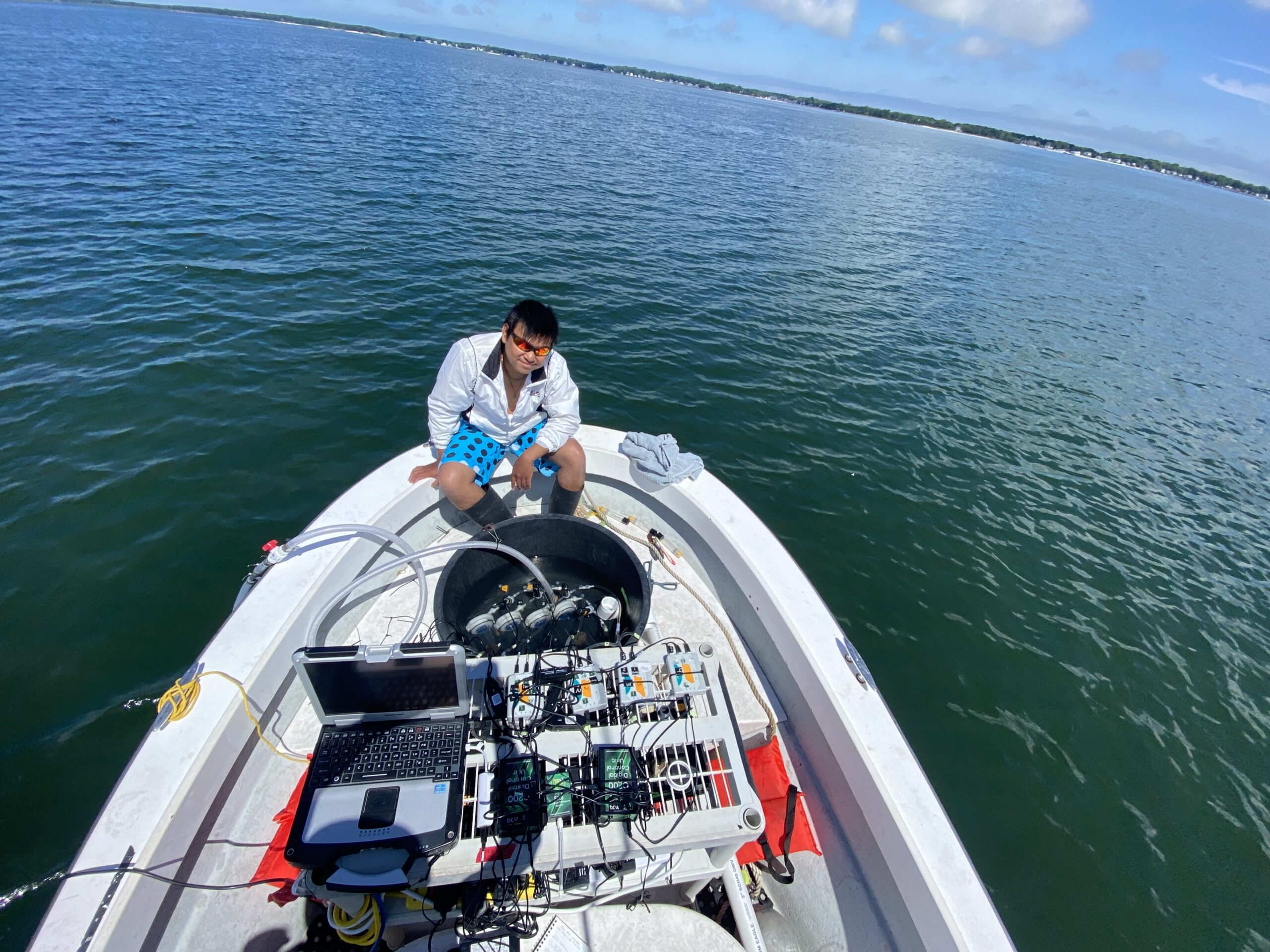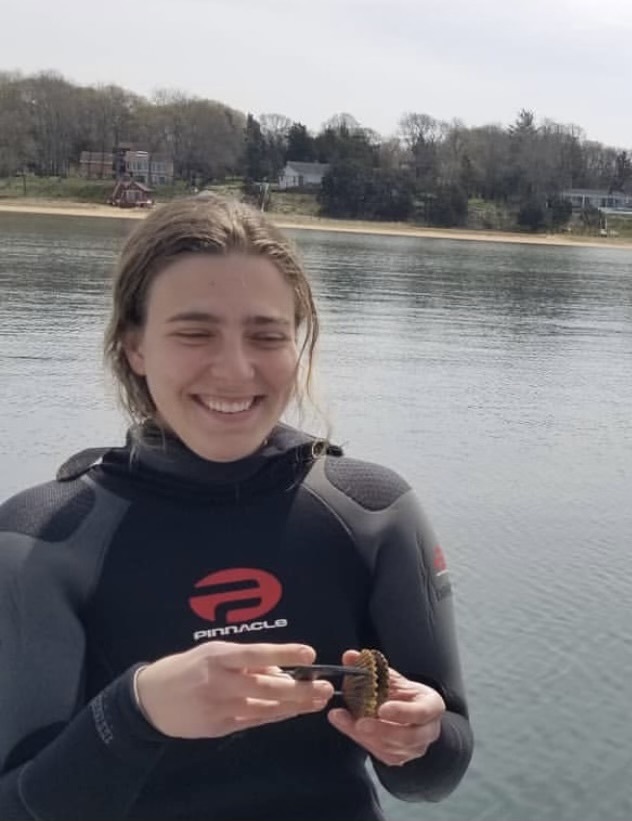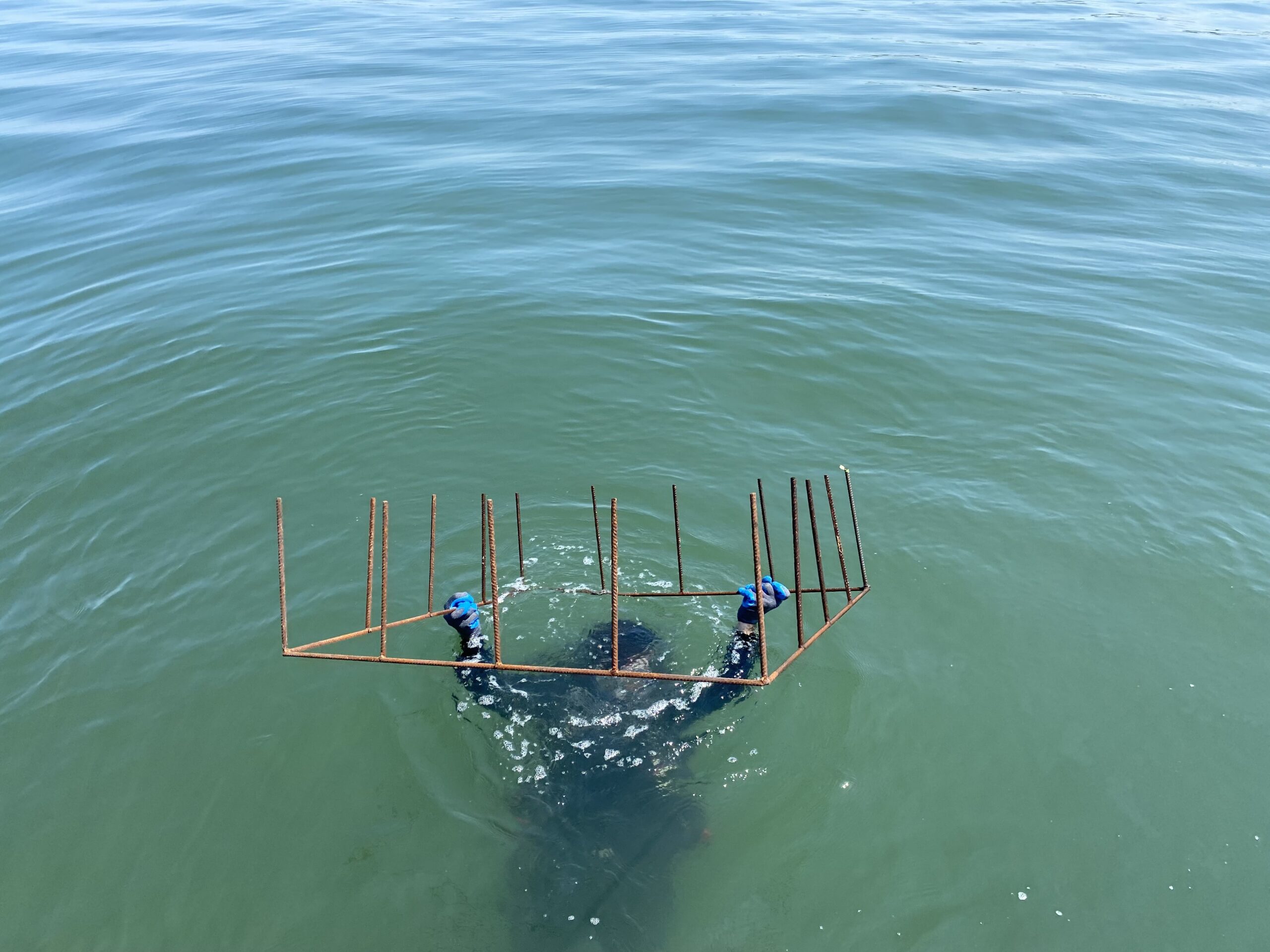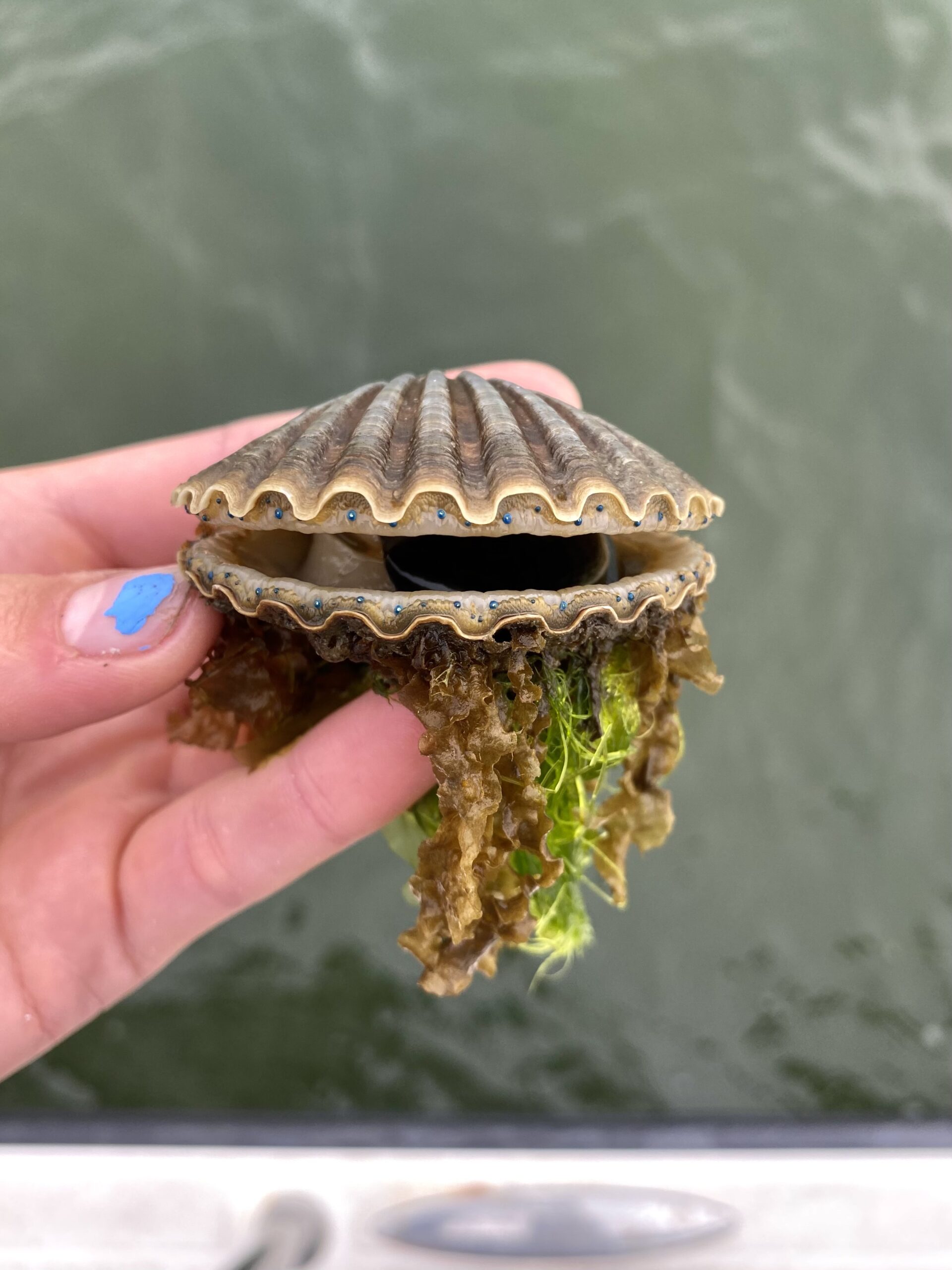
Stony Brook researcher Lucas Wong with the field laboratory equipment he and research partner Jessica MacGregor use to study the respiration of bay scallops in the Peconics to gauge how much physiological stress they are experiencing from various environmental factors.
Stony Brook University graduate student Jessica MacGregor measuring a Peconic bay scallop.
A Stony Brook University biologist raising an exclusion pen that researchers have used to try to protect scallops from being eaten by cow nose rays, in order to gauge how much of an impact the voracious species may be having on scallop populations.
A Peconic bay scallop.

Stony Brook researcher Lucas Wong with the field laboratory equipment he and research partner Jessica MacGregor use to study the respiration of bay scallops in the Peconics to gauge how much physiological stress they are experiencing from various environmental factors.

Stony Brook University graduate student Jessica MacGregor measuring a Peconic bay scallop.

A Stony Brook University biologist raising an exclusion pen that researchers have used to try to protect scallops from being eaten by cow nose rays, in order to gauge how much of an impact the voracious species may be having on scallop populations.

A Peconic bay scallop.
We're happy you are enjoying our content. You've read 4 of your 7 free articles this month. Please log in or create an account to continue reading.
Login / Create AccountWe're happy you are enjoying our content. Please subscribe to continue reading.
Subscribe Already a Subscriber



 Michael Wright on Aug 31, 2022
Michael Wright on Aug 31, 2022